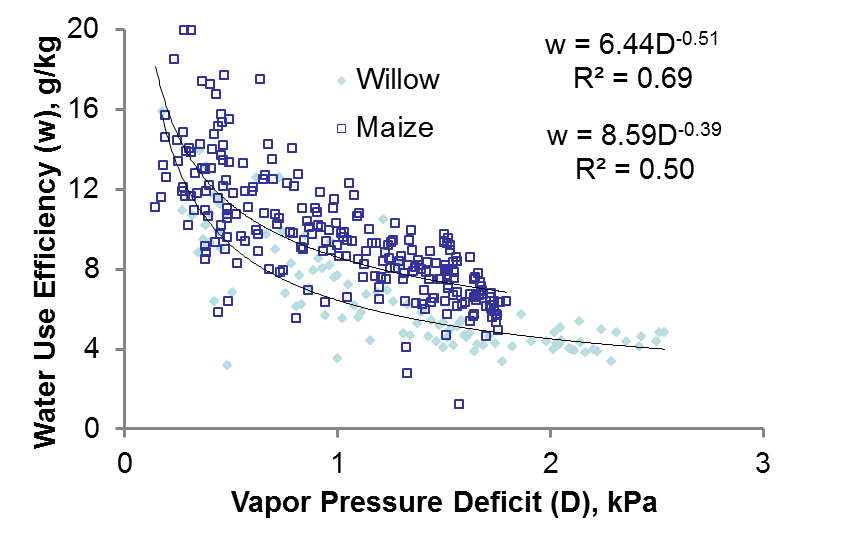In our vegetation simulation models growth is simulated in two ways: (1) with a detailed coupled canopy-transpiration model that follows Farquhar supply/demand for CO2 modeling approach, or (2) with a lumped approach that computes growth as the minimum of a radiation based growth or transpiration based growth.

Water use efficiency of maize and shrub willow (calculated from Maria Laura Cangiano MS thesis data).
The transpiration-based approach requires an accurate estimate of the crop water use efficiency. Our research in the past (Kemanian et al 2005) shows empirically that water use efficiency is inversely proportional to the square root of the vapor pressure deficit, a relationship consistent with the Cowan and Farquhar 1977 theory that stomatal behavior seeks to optimize the carbon gain per unit of water lost. This is a powerful concept for simulating vegetation growth in different environments.

